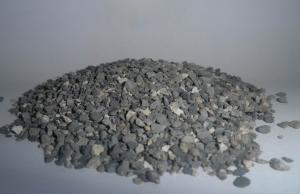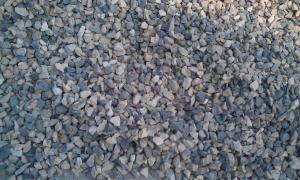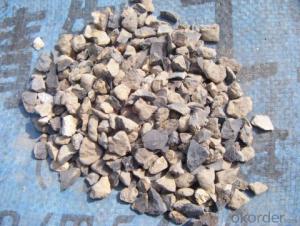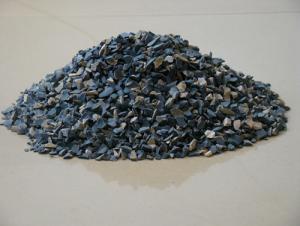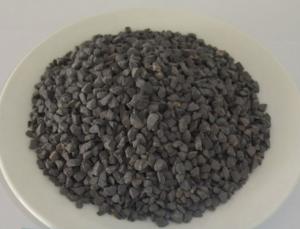Raw Materials for Refractory:Rotary Kiln / Round Kiln Calcined Bauxite for Insulation
- Loading Port:
- China main port
- Payment Terms:
- TT OR LC
- Min Order Qty:
- 25 m.t.
- Supply Capability:
- 2000 m.t./month
OKorder Service Pledge
OKorder Financial Service
You Might Also Like
Pack
| Packaging Details: | 1.25kg/Bag 2.As your demands |
| Delivery Detail: | 30 days after down deposit |
Al2O3 85% Rotary Kiln Calcined Bauxite for Refractory Castables
Specifications&Data
What is the details of our steel fiber reinforced refractory castable?
Steel fiber reinforced refractory castable is a special castable which is added steel fiber into the castable,can improve the toughness,mechanical strength,thermal shock resistance and spalling resistance.
What is the Feature of Our steel fiber reinforced refractory castable?
1.High mechanical strength,
2.Good thermal shock resistance,
3.Good toughness and anti-stripping,
4.High refractoriness,
5.Tiny linear variation,no cracking,
6.Resistant to scour and erosion,
7.Good volume stability under high temperature.
What is the Applications of our steel fiber reinforced refractory castable?
Steel fiber reinforced refractory castable is mainly used in heat treatment furnace,heating furnace,soaking pit furnace,tundish slag dam weir,seconclary refining and the catalytic cracking unit etc key part of kiln furnace and thermal equipment.
What is the Technique Data of our steel fiber reinforced refractory castable?

Company Information
CNBM International Corporation (CNBM International) is the most important trading platform of CNBM Group Corporation, a state-owned company under the direct supervision of State-owned Assets Supervision and Administration Commission of the State Council.
Since 2004, the trading volume of CNBM International has been doubled in 5 successive years owing to the support of superior corporations and effort of all staff. Meanwhile, we have established strategic partnerships with hundreds of domestic manufacturers and sound business relations with clients from over 120 countries. Currently, we have wholly-owned overseas subsidiaries and branches in 5 countries with a view to realize localization, which also represents an essential progress in our globalization target.
In line with the business, CNBM International launched E-business platform Okorder.com.
- Q: What type of firebrick does TZ-3 represent?
- It is the standard brick.
- Q: What are the insulation fireproofing materials?
- Asbestos is the most common. Asbestos containing zirconium and made of the mixture of zirconium aluminum and silicon through wire drawing is better. Of course, some are made directly from natural things which can withstand 1400 degrees for over 30 seconds while the internal temperature had no significant change, and withstand 1400 degrees for over five minutes while inside temperature increase does not exceed 5 degrees.
- Q: What's the poured refractory material?
- Frequently used poured refractory material: AZS brick, corundum brick, direct-bonded?magnesia-chrome?bricks, carborundum brick, silicon nitride bonded silicon carbide brick, nonoxide refractories like nitride, silicide, sulfide, boride and carbide, and oxide refractories like calcium oxide, chromium hemitrioxide, alumina, magnesium oxide and beryllia.
- Q: Ask some questions about refractories
- The main chemical composition of Al2O3 = 75%, Al2O3 = 89%Bulk density g/M3 2.9 3.15Reheating linear change rate 1450 C -0.10 +0.01Apparent porosity% 1917Compressive strength MPa 2228Flexural strength MPa 810Refractoriness 21002150 DEG C
- Q: What is the material of fire resistant glass reinforced plastics grating?
- What is the material of fire resistant glass reinforced plastics grating?
- Q: Does anyone know about the fire resistance period of thin fireproof coatings?
- The thin fireproof coatings will be expanded when exposing to open fire, and produce the inert gas to extinguish fire, but they will do harm to people, and the coatings are not stable, and the weather resistance and service life of which are short. According to the state regulations, the thin fireproof coatings have the highest fire resistance of only 2.5 hours, while the thick steelwork fireproof coatings have a fire resistance of 3.0 hours or more.
- Q: What are the technical requirements for refractories?
- To put it simply, physical indicators are pores, volume density, pressure resistance, slag resistance, thermal shock resistance, foot expansion coefficient, thermal conductivity, oxidation resistance and so on. If it is castable, the indicators are mobility, water rate, setting time, and anti bending strength. If it is coating mix, the bonding strength should be checked. Chemical indicators are loss of ignition and the content of aluminum, magnesium, silicon, calcium, chromium, titanium and carbon.
- Q: What 's the highest temperature can magnesium plate glass resist ?
- 2 hours, according to the fire resistance test report, 2h
- Q: what is the Specifications Grading for Fireproof rubber insulation materials ?
- External insulation materials, welded wire mesh matt external wall insulation, external wall thermal insulation mesh matt. 1,inorganic activel thermal insulation materials 2,silicate?thermal?insulation?material 3,ceramic thermal insulation 4, gelatine powder polyphenyl granule, 5,teel wire gauze picking cement cystosepiment(Estazolam platepowder particles)6 extruded sheetXPX. 7,Rigid polyurethane coating at the scene, Polyurethane insulation board8,rigid polyurethane foam,9EPS foam board roofing materials. 1, a ceramic insulation board 2, xps extrusion board 3, perlite and perlite brick 4, vermiculite and vermiculite brick heating, air conditioning Material: Phenolic resins, polyurethane waterproof thermal insulation integration, sponge rubber, polyethylene, polystyrene foam, glass wool, rock wool Steel material: Polystyrene, extruded sheet, polyurethane panels, glass wool carpets and the like. Five inorganic thermal insulation materials: Foam cement, DY inorganic active insulation system super thin vacuum insulated panel for building external walls .
- Q: what's the materials of fireproof?housing?
- what's the materials of fireproof?housing? what's the fire?rating? how much is it? What are the key installation points?
Send your message to us
Raw Materials for Refractory:Rotary Kiln / Round Kiln Calcined Bauxite for Insulation
- Loading Port:
- China main port
- Payment Terms:
- TT OR LC
- Min Order Qty:
- 25 m.t.
- Supply Capability:
- 2000 m.t./month
OKorder Service Pledge
OKorder Financial Service
Similar products
Hot products
Hot Searches
Related keywords





